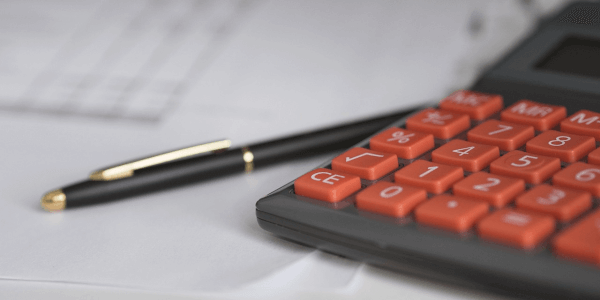Tanzania Corporate Tax - Guide for International Expansion
Learn about the corporate tax system in Tanzania, its current rates, how to pay your dues and stay compliant, and best practices.

When a bank or lender provides a loan, it isn’t just handing out money. It’s investing.
Think of this amount as a lender’s version of "money in transit." When a lender issues a loan, it doesn’t just give cash. Instead, it records that as an asset and expects payment with interest.
Accounting for loan receivables is essential, as they are the backbone of financial institutions. They help maintain steady cash flow and accurate balance sheets. Understanding loan receivables helps businesses, investors, and accountants make informed financial decisions while keeping the numbers in check.
The EY Item Club forecasts that bank-to-business lending will grow by just 0.5% (net) this year before increasing to 2.8% (net) in 2025, driven by lower borrowing costs stimulating demand1. This figure suggests that businesses may be holding back on borrowing in the short term due to economic uncertainty or higher costs. But, the forecasted rebound in 2025 reflects improved business confidence and a more favorable lending environment.
If you’re a UK financial institute who wants to monitor their loans better and keep their accounts at their optimal condition, you’ve landed on the right page. We’ll walk you through the basics of loan receivables and how they work. You’ll also find out how Wise Business, a non-banking alternative can help receive those loan payments from local and international partners with ease.
A loan receivable is the amount a borrower owes to a lender, typically a bank or credit union. It is recorded as an asset in the lender's books, specifically under the loan receivable journal entry in the general ledger.
This entry tracks the outstanding loan amount and helps with accurate financial reporting. Just like other accounting processes, managing loan receivables requires a transparent approach. The main aspects included in the loan receivables journal entry are:
Detailed loan receivable journal entries are the financial institution's roadmap. Clear records and tracking every repayment help maintain a steady cash flow.
Suppose BrightTech Ltd., a UK-based software company, secures a £50,000 business loan from a bank to fund its expansion. The bank records this amount as a loan receivable, anticipating repayment over time and interest. Suppose the loan has a 5% annual interest rate (the terms of the interest rate and timeframe depend on the agreement between the two parties).
The bank’s finance team records an initial journal entry:
Each month, the team records accrued interest as income:
If BrightTech Ltd. repays £2,000 in a given month, the finance team updates the books:
Accurate record-keeping allows the finance teams to identify delinquencies early and monitor repayment schedules. It enhances their risk-management strategy and helps them scale their profits.
A bank or a lender should ideally use a double-entry system for their transactions. This system requires a well-rounded bookkeeping process. Each entry added to the system should have a corresponding entry. Such a system produces accurate results and helps spot even minor loopholes.
In the example above, we saw that the process starts with loan issuance, where the lender debits the accounts receivable loan and credits cash, reflecting the disbursement of funds. As the interest accrues, it is recorded as interest receivable, increasing revenue.
Later, when the borrower makes a payment, the lender updates the books by crediting the “Loan Receivable” and “Interest Receivable” accounts while debiting cash to reflect the received amount. If a loan becomes uncollectible, it is written off as a bad debt expense to maintain accurate financial records.
Step 1: Issuing the loan
Debit loan receivable, credit cash
Step 2: Recording interest earned
Debit interest receivable, credit interest income
Step 3: Loan repayment
Debit cash, credit loan receivable and interest receivable
Step 4: Writing off a bad loan (if needed)
Debit bad debt expense, credit loan receivable
Knowing how to record a loan in accounting sets the tone for all cashflow management scene that waits ahead.
A loan can be an asset or a liability, depending on whether you’re lending or borrowing. But first, take a look at the definitions of each.
What is an asset?
An asset has monetary value and can benefit the owner in the future. Examples include cash, equipment, real estate, and loan receivables.
What is a liability?
A liability is an obligation to pay money or provide services to another party, such as a person, business, employee, or bank. For example, if you’re a CEO and your company hasn't paid your agreed salary for several months, the unpaid amount is considered a liability for the company.
Circling back to whether the loan is an asset or a liability – well, it’s an asset for the lender and a liability for the borrowers. “Loan Receivable,” in itself, is an asset as it represents the money that a lender expects to receive from the borrower. Since the borrower owes this amount, the lender records it as an asset to keep track of future payments.
Accounting for loans receivable and payable reflects two opposite sides of the same coin. A loan receivable is an asset recorded by a lender. It represents the money owed by a borrower. On the other hand, a loan payable is a liability recorded by a borrower. This represents the money they owe to a lender.
Let’s scan the key differences between the two below:
| Aspect | Loan Receivable | Loan Payable |
|---|---|---|
| Who Records It? | Lender (e.g., bank or business) | Borrower (e.g., individual or company) |
| Accounting Category | Asset (because it represents money owed to the lender) | Liability (because it represents money the borrower must repay) |
| Balance Sheet Placement | Recorded under current or non-current assets, depending on repayment terms. | Recorded under current or non-current liabilities, based on repayment schedule. |
| Example | A bank loans £10,000 to a business and records it as a loan receivable. | A business borrows £10,000 from a bank and records it as a loan payable. |
Now that you know the core differences between the two, you can conduct better account management when you’re handling loan transactions. Every loan or credit deal comes with risks. Missing or delaying payments can hurt your business credit score and make it harder to get funding in the future. Always check the terms and conditions carefully before you commit.
Here are some commonly asked questions about loan receivable:
With accounts receivable financing, a lender gives you a portion of your unpaid invoices upfront, sometimes up to 96% of the total amount. Once your customer pays the invoice, you get the rest of the money, minus the lender's fees.
Besides interest, lenders might charge origination fees, usually between 1% and 5% of the loan amount. You may also have other costs, such as late payment fees.
Accounts receivable is recorded as a debit because it represents money that customers owe to the business.
Financial management can make or break a business, triggering its growth or halting it altogether. Keeping an eye on loan receivables requires thorough planning. To keep it intact, a business should outsource the task or have proficient account managers onboard. Remember to check out Wise Business for international payments.
Wise can help UK businesses, freelancers and sole traders get paid by customers in multiple currencies, with low fees and the mid-market exchange rate.

Your Wise Business account comes with local account details to get paid in 8+ major foreign currencies like Euros and US Dollars just as easily as you do in Pounds.
All you need to do is pass these account details to your customer, or add them to invoices, and your customer can make a local payment in their preferred currency. You can also use the Wise request payment feature to make it even easier and quicker for customers to pay you.
Get started with Wise Business 🚀
Sources used:
Sources last checked on date: 13-May-2025
Disclaimer: The UK Wise Business pricing structure is changing with effect from 26/11/2025 date. Receiving money, direct debits and getting paid features are not available with the Essential Plan which you can open for free. Pay a one-time set up fee of £50 to unlock Advanced features including account details to receive payments in 22+ currencies or 8+ currencies for non-swift payments. You’ll also get access to our invoice generating tool, payment links, QuickPay QR codes and the ability to set up direct debits all within one account. Please check our website for the latest pricing information.
*Please see terms of use and product availability for your region or visit Wise fees and pricing for the most up to date pricing and fee information.
This publication is provided for general information purposes and does not constitute legal, tax or other professional advice from Wise Payments Limited or its subsidiaries and its affiliates, and it is not intended as a substitute for obtaining advice from a financial advisor or any other professional.
We make no representations, warranties or guarantees, whether expressed or implied, that the content in the publication is accurate, complete or up to date.

Learn about the corporate tax system in Tanzania, its current rates, how to pay your dues and stay compliant, and best practices.

Learn the most effective ways to handle and prevent late payments as a small business based in the U. Our guide covers all of the main things you need to know.

Learn how to do invoice reconciliation the right way and key things to note to help your business in the UK in our quick guide.

Learn how automation and AI can sharpen your company's competitive edge in accounts payable by boosting efficiency, ensuring timely vendor payments, and more.

Learn about the corporate tax system in Austria, its current rates, how to pay your dues and stay compliant, and best practices.

Learn about the corporate tax system in Botswana, its current rates, how to pay your dues and stay compliant, and best practices.